The Pfizer-BioNTech vaccine is one of two vaccines that utilize the most advanced mRNA technology, while also requiring strict storage conditions.
What You Need to Know About the Pfizer Vaccine
The Covid-19 vaccine named BNT162B2 was developed in collaboration between the American company Pfizer and the German company BioNTech. This vaccine is also known by two other names: Tozinameran or Comirnaty A.
Clinical trials for the Pfizer vaccine showed an efficacy rate of 95-96% in preventing the entry of the coronavirus.
According to the New York Times, each batch of the Pfizer-BioNTech vaccine, containing 7.5 million doses, is produced within 60 days.
The Most Advanced mRNA Technology
The Pfizer-BioNTech vaccine uses mRNA technology. This vaccine is recommended by the U.S. Centers for Disease Control and Prevention (CDC) for individuals aged 12 and older.
The SARS-CoV-2 virus carries proteins that allow it to invade human cells. These proteins, known as spike proteins, are the focus of research in the production of vaccines and treatments for Covid-19.
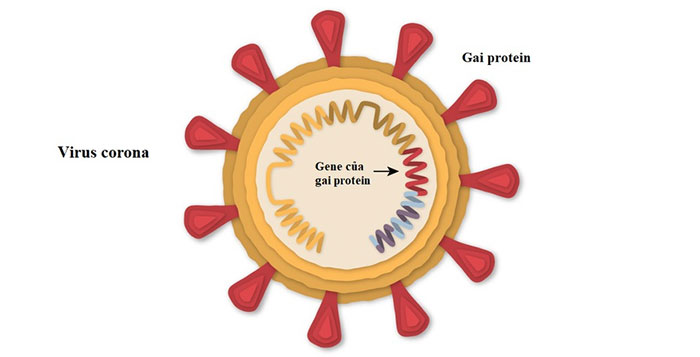
Coronavirus. (Photo: New York Times).
The Pfizer-BioNTech vaccine is based on the genetic structure of the SARS-CoV-2 virus to create artificial spike proteins.
The vaccine uses messenger RNA (mRNA), a type of genetic material that human cells will process to produce proteins. mRNA molecules are very fragile, and they will be broken down by natural enzymes in the human body if injected directly.
To protect the mRNA in the vaccine, Pfizer-BioNTech encapsulates the mRNA molecules in lipid nanoparticles.
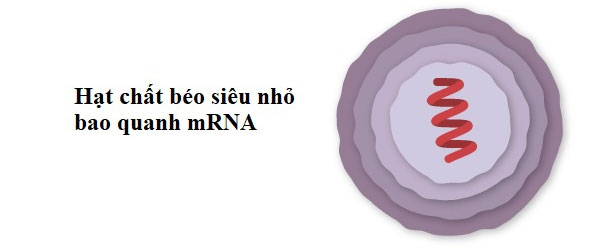
mRNA Molecule. (Photo: New York Times).
Due to their inherently unstable nature, the mRNA molecules in the vaccine will degrade at normal temperatures. Therefore, the Pfizer-BioNTech vaccine must be stored at ultra-cold temperatures, at least -70 degrees Celsius or lower.
To maintain the stability of the Pfizer-BioNTech vaccine, special storage equipment is required, including dry ice, thermal sensors, and GPS tracking devices.
Administering the Vaccine
After the vaccine is administered, the molecular particles in the vaccine collide and merge with human cells, releasing the mRNA. Human cells will read the genetic information contained in the mRNA and subsequently create spike proteins. The mRNA molecules from the vaccine are eventually destroyed by human cells.
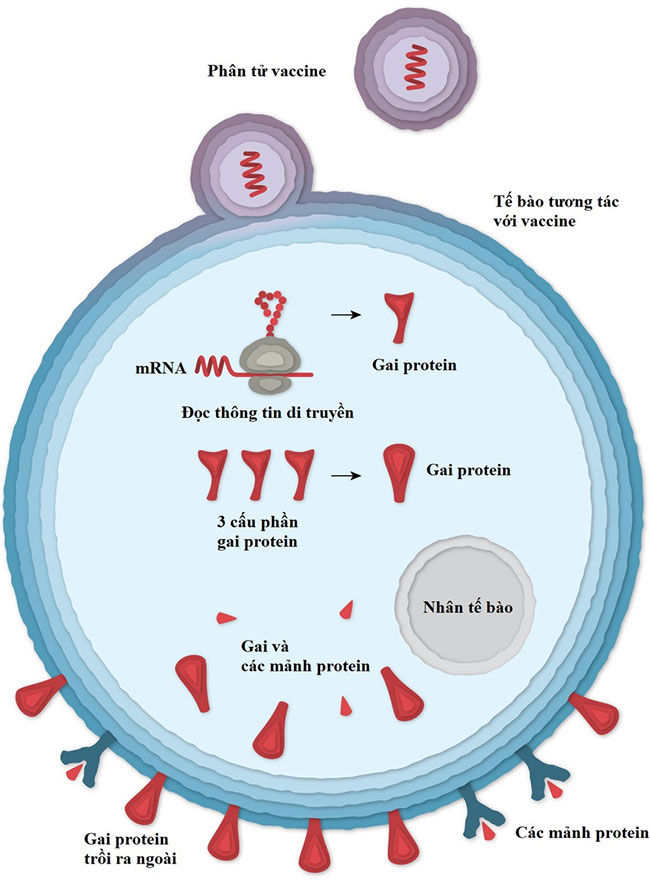
Vaccine Molecule Interacting with Cell. (Photo: New York Times).
Some spike proteins will form sharp protrusions that rise above the surface of the cell, extending outward. The cells affected by the vaccine also break down proteins into smaller fragments on their surface.
The protruding spike proteins and the protein fragments on the cell surface will eventually activate the human immune system.
When the cells that interacted with the vaccine die, their remnants contain many spike proteins and protein fragments. These remnants will be collected by a type of immune cell known as antigen-presenting cells (APCs).
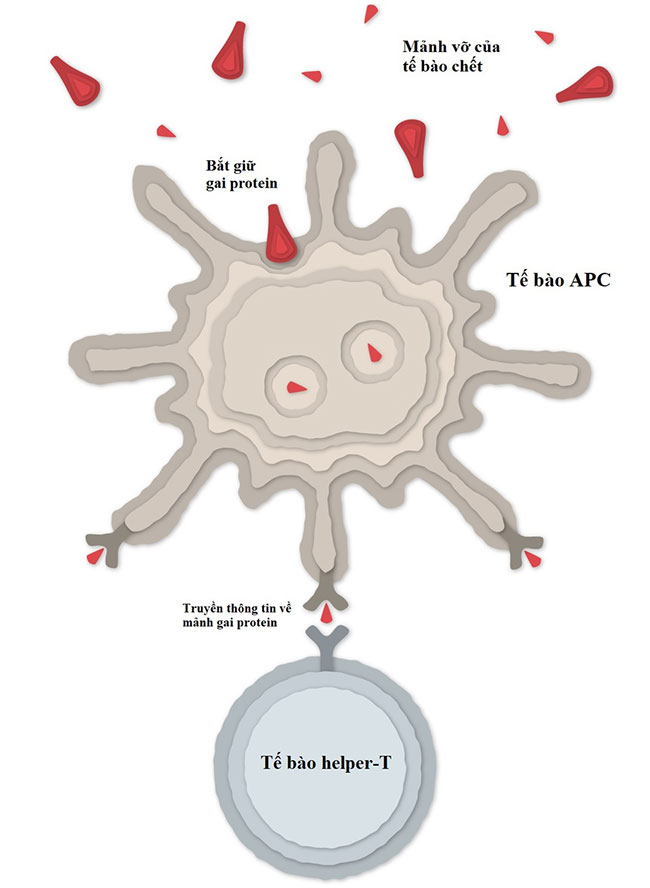
APC Activating Helper-T Cells. (Photo: New York Times).
The fragments of spike proteins will attach to the surface of the APCs until the helper-T cells detect these fragments. The helper-T cells will then activate the immune system to produce antibodies against the coronavirus.
Antibody Production
Other immune cells, known as B cells, can interact with the spike proteins of the coronavirus on the surface of cells that have interacted with the vaccine or the floating protein fragments. Some B cells may attach to the spike proteins.
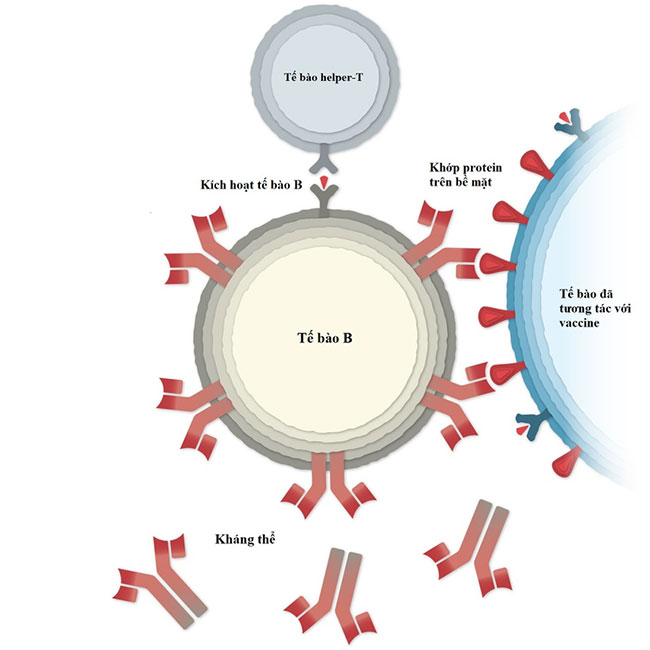
Helper-T Cells Activating B Cells to Produce Antibodies. (Photo: New York Times).
When B cells are activated by helper-T cells, they will begin to produce antibodies that attack the spike proteins.
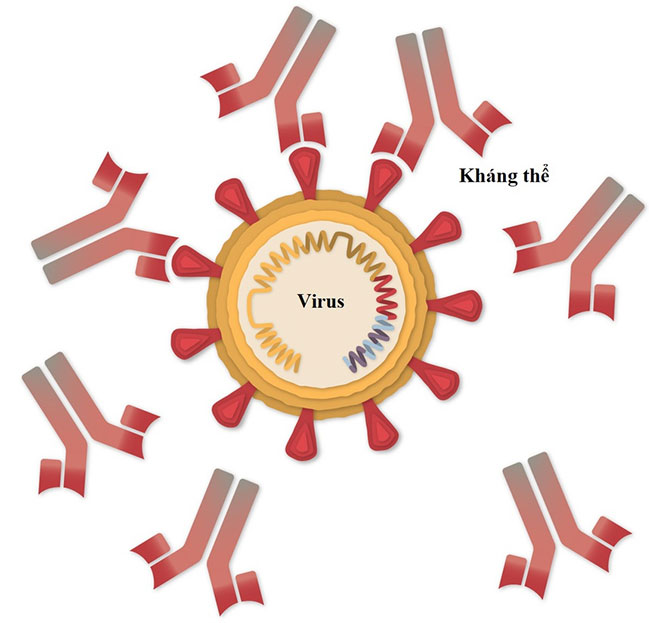
Antibodies Neutralizing Coronavirus. (Photo: New York Times).
The produced antibodies will bind to the spike proteins of the invading coronavirus. The antibodies mark the virus for destruction by the human immune system. More importantly, the antibodies prevent the spike proteins of the virus from attaching to healthy human cells.
To eliminate the virus, APCs activate another type of immune cell known as cytotoxic T cells. These cells are responsible for seeking out and destroying cells that have been invaded by the virus, identified by the fragments of spike proteins on their surface.
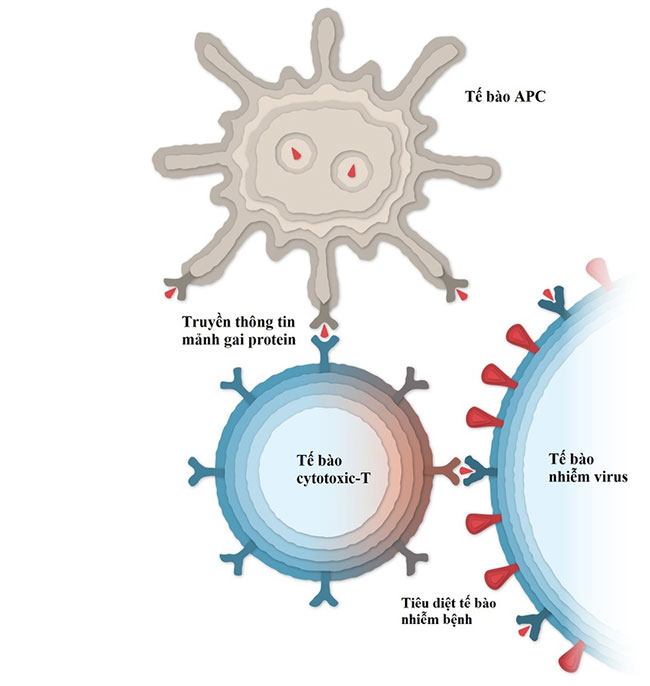
Cytotoxic T Cells Destroying Infected Cells. (Photo: New York Times).
Remembering Information About the Coronavirus
The Pfizer-BioNTech vaccine is administered in two doses, 21 days apart, to help the immune system function most effectively against the coronavirus. However, due to the limited time for research, scientists cannot be certain how long the immunity created by the vaccine will last.
Preliminary studies show that within 10 days after the first dose, the vaccine begins to generate a strong immune response against the virus.
It is possible that several months after vaccination, the levels of antibodies and cytotoxic T cells will gradually decrease. However, by that time, the immune system will still contain special cells that retain information about the coronavirus for many years, even decades.
Each vial of the vaccine contains 5 doses of 0.3 ml. The vaccine needs to be thawed and diluted with saline. After dilution, the vaccine must be used within 6 hours.



















































